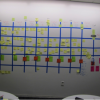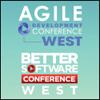 |
Top 10 Most-Read AgileConnection Articles of 2020 Agile is iterative, encourages collaboration, and is always looking to improve processes. The most-read articles from 2020 show that software professionals were looking to improve their agile teams and workspace.
|
|
 |
Fitting into an Agile Environment as a Business Analyst It's the perennial question: Is there a role for business analysts in an agile environment? It stems from the fact that the Scrum Guide defines only three roles on the team: the development team, the ScrumMaster, and the product owner. Business analysts often feel like they have to justify their role. But the BA provides significant value. Here are three main ways they can make a difference on an agile team.
|
|
 |
5 Key Elements for Designing a Successful Dashboard When you’re designing a dashboard to track and display metrics, it is important to consider the needs and expectations of the users of the dashboard and the information that is available. There are several aspects to consider when creating a new dashboard in order to make it a useful tool. For a mnemonic device to help you easily remember the qualities that make a good dashboard, just remember the acronym “VITAL.”
|
|
 |
Applying Data Analytics to Test Automation Testers gather lots of metrics about defect count, test case execution classification, and test velocity—but this information doesn't necessarily answer questions around product quality or how much money test efforts have saved. Testers can better deliver business value by combining test automation with regression analysis, and using visual analytics tools to process the data and see what patterns emerge.
|
|
 |
Six Ways to Use Business Analyst Superpowers in Agile There are those agilists who believe there is no place for a business analyst on their team. Joy Beatty and James Hulgan, both experienced agile consultants, refute this belief and explain how business analysts can enhance the effectiveness of most any agile team.
|
|
 |
Painful Lessons I Learned from Bootstrapping a Startup If you are considering leaving the nest to self-fund your own endeavor, you may want to read about Mike Botsko's experience creating a cloud-based, bug-tracking app called Snowy Evening. What started out as a lot of fun quickly turned into a tough journey. Don't worry—it has a happy ending!
|
|
 |
How Can You Get More Effective with DevOps? By emphasizing better communication and collaboration between software development and IT, this article explores ways to establish trust by focusing on customer value. For example, Manoj Khanna suggests continuous integration and validation as techniques that helps build that trust.
|
|
 |
Moving Beyond the Backlog: The Four Quadrants of Product Ownership What do you consider the role of product owner in an agile development project to be? Bob presents a compelling perspective that a product owner has four distinct critical roles that can prove impactful to a team's success.
|
|
 |
Data Visualization in Test Automation: A Conversation with Greg Paskal
Video
Greg Paskal, test automation lead at Ramsey Solutions, talks about data lakes and how to effectively use data visualization. Done well, data visualization should help practitioners, managers, and stakeholders easily consume, understand, and act on the information the visual displays.
|
|
 |
The "Show Me the Money" Approach to Software Development: An Interview with Michael Harris
Podcast
In this interview, Michael Harris, the president and CEO of David Consulting Group, explains his five-step Value Visualization Framework. He discusses how he came up with the idea, how it can help your team right now, and its similarities to the agile methodology.
|
|
 |
STAREAST 2015 Interview with Rob Sabourin on Exploring Usability Testing for Mobile and Web Technologies
Video
In this interview, Rob Sabourin talks about his STAREAST presentations. These cover how to elicit effective usability requirements with storyboarding and task analysis, and how to blend the requirements, design, and test cycles into a tight feedback loop.
|
|
 |
Acceptance Test-Driven Development and Communication in Agile: An Interview with Jared Richardson
Podcast
In this interview, principal consultant and Agile Artisans founder, Jared Richardson, explains how misunderstanding requirements can cause major issues within an organization. He covers why team members need to communicate, how big projects are often mishandled, and the value of agile.
|
|
 |
Great Business Analysts “Think Like a Freak”
Slideshow
In today's competitive market, employers increasingly depend on business analysts to act as change agents. This puts BAs in the powerful position of influencers—providing the analysis and evidence needed to support an organization’s strategic direction and decision-making. In their book...
|
Faye Thompson
|
 |
The Business Analyst’s Critical Role in Agile Projects
Slideshow
Are you a business analyst, wondering how you fit into agile projects? Are you a ScrumMaster who wants to work with business analysts for a stronger project team? Are you a product owner who needs to supercharge your product backlog? Mark Layton introduces you to the critical role of the...
|
Mark Layton, Platinum Edge, Inc.
|
 |
STARCANADA 2013: Quantifying the Value of Static Analysis
Slideshow
During the past ten years, static analysis tools have become a vital part of software development for many organizations. However, the question arises, “Can we quantify the benefits of static analysis?” William Oliver presents the results of a Lawrence Livermore National Laboratory study...
|
William Oliver, Lawrence Livermore National Laboratory
|
|
|
The Right Question for the Right Requirements
Slideshow
How often have you gone down the road of developing software almost to completion only to discover new requirements that require significant design and coding changes at the last minute? Requirements analysis is not just writing down what customers say they want. It's about digging down and discovering what they need. Without real analysis, our requirements often end up as poorly defined lists, anemic mock-ups, and incomplete or inconsistent models. Jack Jones spotlights one simple technique to discover these needs: Ask "why?" When the customer states a requirement, ask "why?" to delve down a level to discover their real problem, need, or opportunity. You may find you need to repeat "why?" a number of times. Join Jack to explore the very real consequences of not comprehending customer needs early in the process, and practice better communications techniques to avoid unnecessary requirements and scope changes.
|
Jack Jones, KMI
|
Visit Our Other Communities
AgileConnection is a TechWell community.
Through conferences, training, consulting, and online resources, TechWell helps you develop and deliver great software every day.
